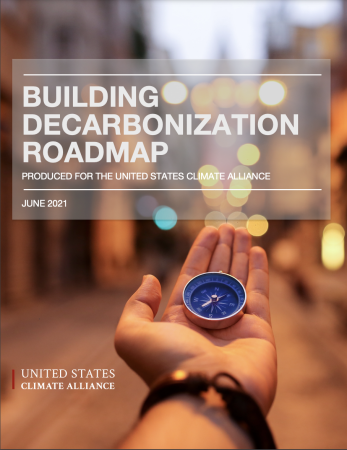Building Decarbonization Roadmap
The buildings sector represents about 40% of global carbon dioxide (CO2) emissions and a similar portion of US emissions. This substantial impact necessitates attention and action, and it also brings with it a wide array of opportunities for decarbonization policy.
Summary
This roadmap was created through collaboration with staff from various state offices as well as industry experts. It is not meant to represent a policy plan for the Alliance or any Alliance states, but it is rather a tool designed to summarize the highest-impact actions that states can take to decarbonize buildings. The document provides information to help states prioritize and sequence those actions—depending on the state's circumstances, climate, and other factors, not all options will be appropriate or immediately possible.
Building sector decarbonization hinges on five core principles:
- Efficient: Ensure new buildings are designed and constructed to be highly efficient and that existing buildings realize deep efficiency benefits.
- Electric: Electrify fossil fuel-based end uses (e.g., space and water heating) where possible. Immediate opportunities in each state will differ based on available technology, economic feasibility, climate, and other context considerations. The benefits of electrification will continue to increase as the grid becomes cleaner.
- Grid-interactive: Enable grid-interactivity with appliances and energy management systems that can receive and respond to grid signals. Grid-interactive buildings can also serve as a distributed energy resource to minimize grid impacts, support variable renewable generation, and maximize consumer value.
- Low-carbon fuels: Determine the role of low-carbon fuels, which may support decarbonization of certain geographies or hard-to-electrify end uses.
- Low embodied carbon: Use low-carbon materials in new construction and major retrofits, and reuse carbon-intensive materials and structures where possible.
